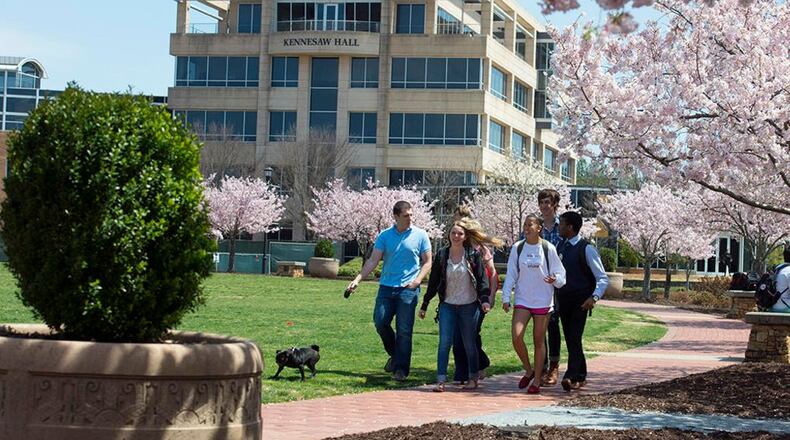Anastaciah Ondieki graduated from Kennesaw State University this year with an undergraduate degree in communications. She was named an Outstanding Senior in the School of Communication and Media, and interned this summer with the AJC investigations team where she did impressive work on a story on affordable housing along the Atlanta Beltline.
Returning to college at age 37 to finish the degree she started 18 years earlier, Ondieki was skeptical about being in a college classroom with students so much younger than her. She shares what she learned from her interactions with traditional college students, and how those exchanges are beneficial in a college classroom.
By Anastaciah Ondieki
The face of the college classroom is changing, growing older, according to data from the National Center for Education. Close to 40 percent of college classrooms are now filled with adult learners, either pursuing their master’s or undergraduate degrees.
With the changing structure of the classroom, traditional and non-traditional students who may not normally find themselves in a common room are now working on similar projects, sometimes experiencing clashing perspectives, work habits, needs and priorities.
These interactions could end badly. But my journey through college proved otherwise.
Credit: Maureen Downey
Credit: Maureen Downey
I began that college journey 18 years ago, but put my education on hold to raise my kids. In 2013, when I enrolled at Kennesaw State University to finish my college degree, I noticed a significant tilt in the composition of the college classroom. I returned to a classroom filled with students younger than I, technological changes and instructional differences.
From the onset, I noticed that my approach on education and social issues was visibly different from the rest of my class mates. Whereas those differences were not present in my initial college pursuit in Kenya, I was visibly aware of how different my thought processes were from the rest of the classroom when I returned at age 37. In such an environment, a clash in perspectives in inevitable. Those clashes, which I’d like to refer to as the exchange of ideas, enriched my college career.
There are obvious differences in the way people of varying age groups think, let alone approach their tasks. In a college classroom, non-traditional student juggling family, work and school responsibilities have little to no time to waste. They are laser-focused on their tasks.
But the traditional student, fresh off high-school with unlimited freedom and lesser responsibilities, could be lax in their approach to similar tasks. These differences in priorities could provide a clash when it comes to group projects. That happens a lot in classrooms.
But, there is also an admirable degree of responsibility among some traditional students who prove that one’s maturity should not be defined by their age, rather their actions. I sat through classes and internships with students who defied all stereotypes tied to the traditional college student. They were always well-prepared for class, not overly consumed by their technology, sociable, focused and great thinkers. Being in an environment with classmates equally focused pushed the bar of excellence and gave way to healthy symbiotic exchanges.
So how do these exchanges occur?
Traditional students, born into technology, bring to the table serious technological skills. They are quick with new media, skilled at troubleshooting technology-related problems and could serve as assets when it comes to putting projects together. On the other hand, the non-traditional student, rich with work and life experiences, provides sharpened analytical skills and work habits beneficial in accomplishing tasks. A collaboration between such students provides a symbiotic relationship where both parties adopt from each-other skills they didn’t initially possess.
Additionally, the diversified classroom presents opportunities of mentorship for non-traditional students. Being older and with tested life experiences, they could be a resource to the young college student, still trying to adjust to college life. Away from home, some students could benefit from the support and encouragement of older students, especially during tense moments, such as examination seasons. As a parent, I found myself lending my advice to younger on several occasions, and it was fulfilling to such students thrive through college.
As predictions by national surveys point to a continued growth in numbers for non-traditional students in colleges countrywide, it’s good to observe the positive impact this change could have on the changing landscape. Students from both ends of the spectrum get the opportunity to grow and learn from groups they would not ordinarily find themselves in. I would not have come across such viewpoints had I been limited to a classroom with people of the same age and mindset.
Despite the inevitable clash of goals and perspectives in today’s college classroom, traditional and non-traditional students do benefit from their interactions. As a microcosm of the work environment and the larger society, the classroom meeting of old and young becomes an experiment of how such exchanges can be beneficial in future diversified environments.
About the Author
Keep Reading
The Latest
Featured



